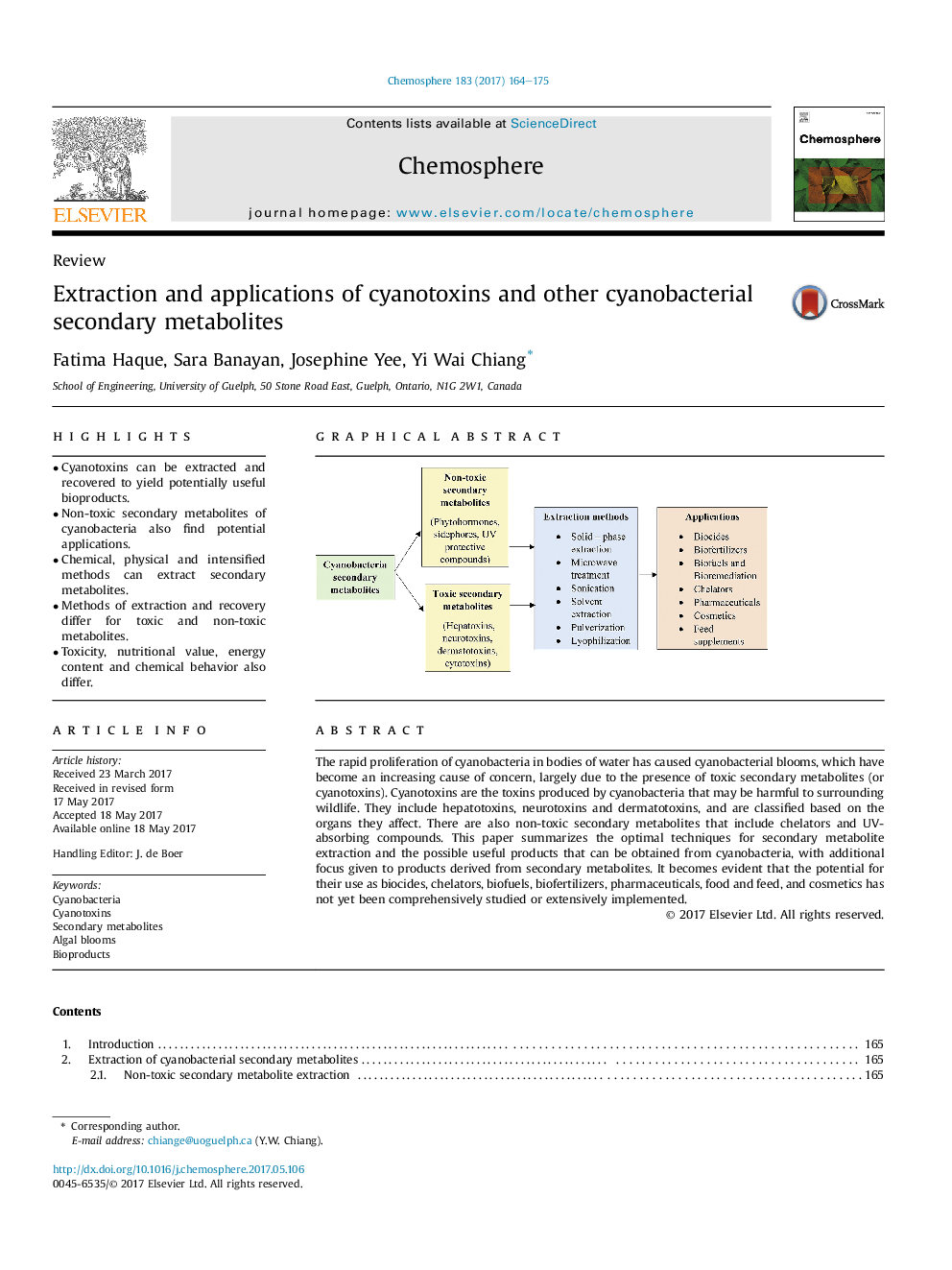| کد مقاله | کد نشریه | سال انتشار | مقاله انگلیسی | نسخه تمام متن |
|---|---|---|---|---|
| 5745946 | 1618788 | 2017 | 12 صفحه PDF | دانلود رایگان |
- Cyanotoxins can be extracted and recovered to yield potentially useful bioproducts.
- Non-toxic secondary metabolites of cyanobacteria also find potential applications.
- Chemical, physical and intensified methods can extract secondary metabolites.
- Methods of extraction and recovery differ for toxic and non-toxic metabolites.
- Toxicity, nutritional value, energy content and chemical behavior also differ.
The rapid proliferation of cyanobacteria in bodies of water has caused cyanobacterial blooms, which have become an increasing cause of concern, largely due to the presence of toxic secondary metabolites (or cyanotoxins). Cyanotoxins are the toxins produced by cyanobacteria that may be harmful to surrounding wildlife. They include hepatotoxins, neurotoxins and dermatotoxins, and are classified based on the organs they affect. There are also non-toxic secondary metabolites that include chelators and UV-absorbing compounds. This paper summarizes the optimal techniques for secondary metabolite extraction and the possible useful products that can be obtained from cyanobacteria, with additional focus given to products derived from secondary metabolites. It becomes evident that the potential for their use as biocides, chelators, biofuels, biofertilizers, pharmaceuticals, food and feed, and cosmetics has not yet been comprehensively studied or extensively implemented.
237
Journal: Chemosphere - Volume 183, September 2017, Pages 164-175
